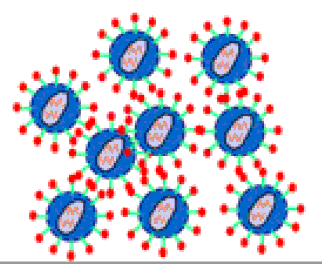Papers in the Biological Sciences

Qingsheng Li Publications
Document Type
Article
Date of this Version
4-15-2014
Citation
J Immunol. 2014 April 15; 192(8): 3947–3957. doi:10.4049/jimmunol.1302826
Abstract
The female genital tract is a portal of entry for sexual HIV transmission and a possible viral reservoir. In this study, the ectocervical CD8+ T cell distribution was explored in situ and was related to expression of CD3 and HLA-DR and presence of HIV RNA. For this purpose, ectocervical tissue samples and genital secretions were collected from HIV-seropositive (HIV+) Kenyan female sex workers (FSWs) (n = 20), HIV-seronegative (HIV−) FSWs (n = 17), and HIV− lower-risk women (n = 21). Cell markers were assessed by in situ staining and by quantitative PCR. HIV RNA expression in tissue was analyzed by in situ hybridization, and viral shedding was assessed by quantitative PCR. The HIV+FSW group had a higher amount of total cells and CD8+, CD3+, and HLA-DR+ cells compared with the HIV−FSW group and HIV− lower-risk women. The majority of CD8+ cells were CD3+ T cells, and the numbers of CD8+ cells correlated significantly with plasma and cervical viral load. HIV RNA expression in situ was found in 4 of the 20 HIV+FSW women but did not correlate with cervical or plasma viral load. Thus, the HIV+ women displayed high numbers of CD8+, CD3+, and HLA-DR+ cells, as well as a limited number of HIV RNA+ cells, in their ectocervical mucosa; hence, this localization cannot be neglected as a potential viral reservoir. The elevated levels of CD8+ T cells may play a role in the immunopathogenesis of HIV in the female genital tract.


Comments
Copyright © 2014 by The American Association of Immunologists, Inc. Used by permission.